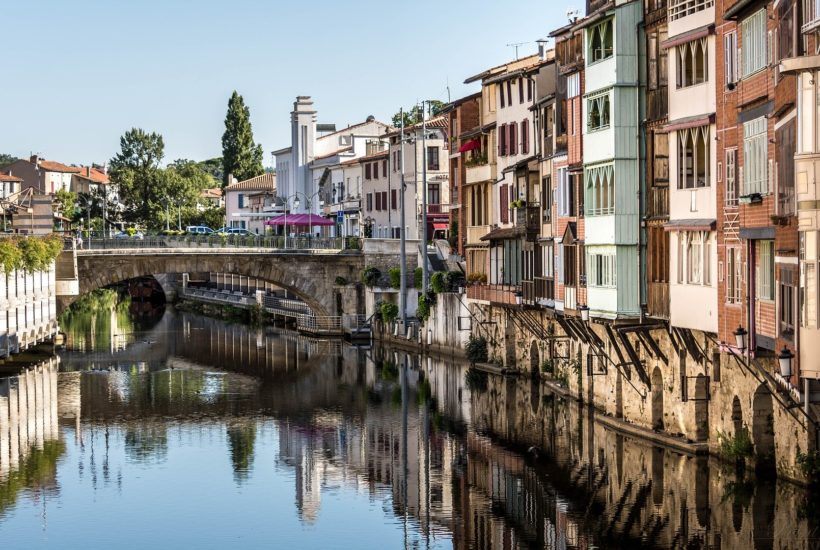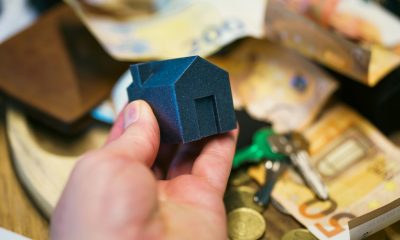Crowdfunding
French real estate crowdfunding reaches new records despite the pandemic
Despite the sharp increase in the amounts collected, the number of projects financed increased slightly (+7%), due to the larger size of the operations financed $912,212 (€803,570) on average. The residential sector is growing in importance and represents the majority of projects funded. Of the 229 real estate transactions financed in the first half of the year, 86% were residential transactions.

The French real estate crowdfunding platform Fundimmo published the results of the half-yearly barometer of real estate crowdfunding in France, carried out in collaboration with Hello Crowdfunding. Despite a half-year marked by the COVID-19 pandemic and containment measures, the market continued to grow with a sharp increase in the amounts collected and reimbursed.
Find out more details about the French real estate crowdfunding market and read the latest business news in the world with the Born2Invest mobile app.
A sharp increase in the volume of collections and reimbursements over one year
With $208.8 million (€184 million) collected over the first six months of the year, the real estate crowdfunding sector continued to grow steadily (+43% compared to the same period last year). The same trend is evident on the repayment side, which represented $87 million (€76.6 million), compared to $47.7 million (€42 million) last year (+82%).
The monthly breakdown of inflows revealed certain stability in the market, with nearly $107 million (€94 million) of investments in Q1 compared to more than $102 million (€90 million) in Q2. These figures show that despite the health crisis, the market has remained particularly active, notably thanks to the digitalization of the sector, which has favored business continuity.
It should also be noted that despite the sharp increase in the amounts collected, the number of projects financed increased slightly (+7%), due to the larger size of the operations financed $912,212 (€803,570) on average, up +16.6% compared to 2019. This is a positive signal for the market, whereas 2019 had already seen an increase of 27.8% in the average amount of operations, explained in part by the raising of the collection ceiling for crowdfunding platforms to $9 million (€8 million) instead of $2.84 million (€2.5 million) per operation under the Pact law.
A strong regional polarization of investments
Ile-de-France $101.2 million(€89.2 million), Auvergne-Rhône-Alpes $26.6 million (€23.4 million), Southern Region $17 million (€15 million). These three regions alone – which were already the market’s TOP 3 regions in 2019 – accounted for nearly 70% of the total inflow into the French real estate crowdfunding market in the first half of the year.
The other regions that were particularly active over the period were New Aquitaine $15.9 million (€14 million), Occitania $13.3 million (€11.7 million) and, to a lesser extent, Pays de la Loire $9.9 million (€8.7 million) and Grand Est $7.5 million (€6.6 million).
An average annual return of 9.4%, with a decreasing average investment period
As an indicator scrutinized by investors, the average annual return proposed for the operations financed in the first half of the year was 9.4%. Slightly higher than the return for the first half of 2019 (+0.2 points), it should at least stabilize over the year 2020. While promoters have seen some of their construction sites extended due to health measures, this will in fact lead to a longer blockage of their equity on these projects. In order to free up new equity to position themselves for other operations, they could be led to offer higher returns to accelerate their fundraising.
According to data provided by several platforms, representing 50% of total market inflows, the projects attracted an average of 490 investors who invested $1,862 (€1,640). Combined with the return and the average investment period, these figures allow us to calculate an average gross gain of $306 (€270) per project in which savers have invested.
An average annual return of 9.4%, with the average investment period decreasing
The residential sector is growing in importance and represents the majority of projects funded.
Of the 229 real estate transactions financed in the first half of the year, 86% were residential transactions. This is significantly more than in the first half of 2019 (79%). There are several explanations for this increase, on the one hand the constant increase in projects for sale of goods on the market, the proportion of which has almost doubled compared to last year, rising from 24% to 38% of projects.
On the other hand, since 2019 the emergence of new co-living projects could be observed, a diversification that prefigures an interesting development for the market. Real estate crowdfunding is also becoming more democratic as a tool for financing new forms of urban housing, strengthening social ties, in line with the aspirations of new generations in particular.
The other asset classes all recorded a slight decline over the first six months of the year compared with the same period last year.
The “average project” financed during the first half of the year was a residential operation of 40 housing units in the Ile-de-France region, carried out by an operator with revenues of $12.5 million (€11 million).
Late repayments up slightly, average default rate remains stable
The average delay rate, which takes into account only the maximum contractual delay since 2012, is up 3.07 points for delays of less than 6 months and 2.41 points for delays of more than 6 months compared to 2019. They amount to 9.48% and 10.10% respectively. In detail, it can be seen that only a few players concentrate significant delays.
As for the average default rate, calculated on the basis of projects that have suffered a loss of capital and/or loss of interest since 2012, it is evaluated at 0.74%, up 0.17 points. In an effort to ensure transparency, the Hello Crowdfunding project aggregator updates data on the progress of the various projects every month, thus making it possible to identify projects that are behind schedule.
__
(Featured image by daott81 via Pixabay)
DISCLAIMER: This article was written by a third party contributor and does not reflect the opinion of Born2Invest, its management, staff or its associates. Please review our disclaimer for more information.
This article may include forward-looking statements. These forward-looking statements generally are identified by the words “believe,” “project,” “estimate,” “become,” “plan,” “will,” and similar expressions. These forward-looking statements involve known and unknown risks as well as uncertainties, including those discussed in the following cautionary statements and elsewhere in this article and on this site. Although the Company may believe that its expectations are based on reasonable assumptions, the actual results that the Company may achieve may differ materially from any forward-looking statements, which reflect the opinions of the management of the Company only as of the date hereof. Additionally, please make sure to read these important disclosures.
First published in ideal-investisseur.fr, a third-party contributor translated and adapted the article from the original. In case of discrepancy, the original will prevail.
Although we made reasonable efforts to provide accurate translations, some parts may be incorrect. Born2Invest assumes no responsibility for errors, omissions or ambiguities in the translations provided on this website. Any person or entity relying on translated content does so at their own risk. Born2Invest is not responsible for losses caused by such reliance on the accuracy or reliability of translated information. If you wish to report an error or inaccuracy in the translation, we encourage you to contact us.

-

 Fintech2 weeks ago
Fintech2 weeks agoSwiat Secures BaFin Approval and Accelerates Europe’s Digital Securities Infrastructure
-

 Impact Investing3 days ago
Impact Investing3 days agoEU End-of-Life Vehicles Rule Pushes Cars Toward a Circular Economy
-

 Crowdfunding1 week ago
Crowdfunding1 week agoFlower Burger Launches Crowdfunding to Fuel Growth in Booming Plant-Based Market
-

 Business8 hours ago
Business8 hours agoTopRanked.io Weekly Affiliate Digest: What’s Hot in Affiliate Marketing [1xBet + FIFA World Cup]
























